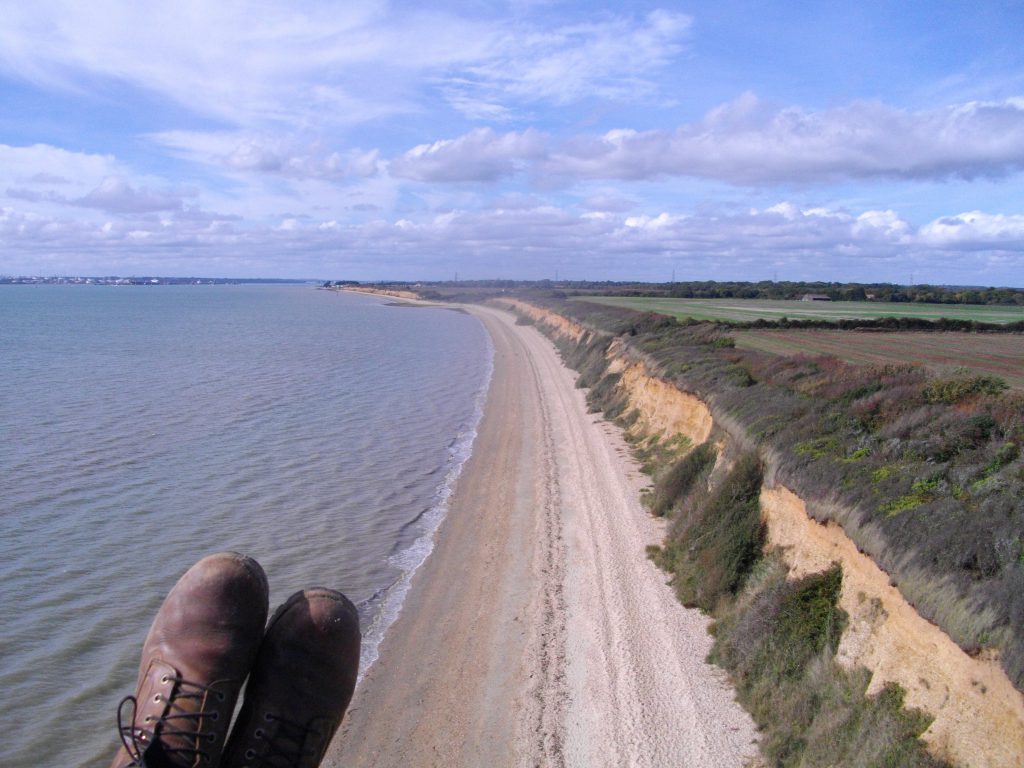As an air experience school, we provide dual flying lessons which can be inspirational and useful for learning to paraglide solo, but we cannot provide the training to get you qualified to fly solo. This means we are well placed to give unbiased advice about solo training.
So should you learn to paraglide? If you start, what exactly are you getting yourself into?
The attraction
Once you’re qualified and own your equipment, you’ll have a flying machine in a backpack. You can turn up at a hillside or mountain, lay out your wing in a few minutes, and float off into the sky. You might have a gentle flight a couple of hundred feet above the hill, or you might connect with powerful thermals and end up skimming the undersides of clouds. Paragliding combines serenity, exhilaration, constant learning, connection to nature, and moments of such beauty and satisfaction that you forget about everything else. What’s not to like?
The drawbacks
Danger – my first instructor used to say “paragliding is a very safe sport, but there’s an awful lot of accidents”. It’s very unusual for our equipment to fail, the most common cause of accidents is the pilot: pushing the limits of safe weather conditions for flying, or pushing themselves too far beyond their skills and experience. By flying in higher wind speeds, or in sharp edged thermals, we risk entering turbulent air and suffering a “collapse”, where our fabric wing folds up. Most collapses recover extremely quickly, but some cause the glider to dive or turn – and if you’re close to the ground this can be very dangerous. In order to paraglide safely, I’d suggest you need 2 things: patience – to say no when the weather’s not right; and self-awareness – being honest to yourself about your ability and your judgement.
Frustration – British weather is unreliable. You only need 10 days to learn to paraglide, but if you’re learning in the UK, the chances of the 10 days being consecutive are close to nil. Many people take more than a year to learn. Once you’re qualified, the range of suitable weather conditions expands slightly, but less than half of days have good weather for flying.
Time – Especially in the early stages, you cannot let paragliding be one of many different hobbies. It requires dedication in order to progress safely. There will be wasted trips to the hill, social calendars kept clear just in case the weather turns out good, and the occasional argument with loved ones as you try to wriggle out of a previous commitment that turns out to be on the best flying day of the year.
How to choose a paragliding school for solo training
Make sure your school is registered with the BHPA (our national association). They nearly all are, and that gives you an assurance of quality and safety. I would ask a prospective school how many students began solo training in the last year, and how many qualified. If lots are starting, but few are finishing, that’s a bad sign. The best way to be sure you like a school would be to spend a few hours observing a training session.
If you’re able to take time off at short notice, then learning in the UK can be great. If not, you should consider learning abroad. There are several BHPA registered schools in mountainous parts of Europe, and some UK based schools run trips abroad. With much more reliable weather, there is the possibility of taking two weeks off and getting fully qualified. Bear in mind that flying in the UK is different, with different terrain and weather, so you may need some coaching to adapt to UK conditions.
So how do you know paragliding is right for you?
There are many different sorts of people who participate successfully in the sport. Don’t fly out of a desire to prove something, or in response to peer pressure – that’s likely to be not fun, and possibly dangerous. People who make good paraglider pilots include those who:
- Have always dreamed of flying
- Like adventure and respect nature
- Know their limits and to want to expand them
- Are patient observers, of their environment and themselves
- Learn through playfulness
My first experience of paragliding was a tandem flight in the southern French alps. I still remember it – the extraordinary feeling of running forwards and being lifted off, and then the view becoming more and more awesome as we rode the rising air currents. That’s how I knew the sport was right for me, and it’s a privilege that I can now give similar experiences to others.

Fill your boots with the view!
